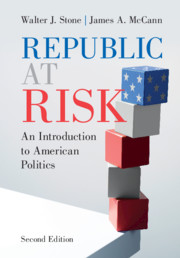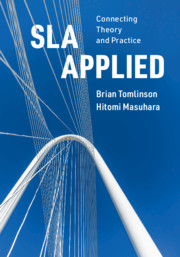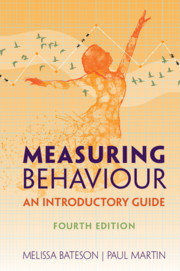Refine search
Actions for selected content:
36762 results in Cambridge Textbooks
5 - Recognition, Recall, Rehearsal and Retrieval
-
- Book:
- SLA Applied
- Published online:
- 07 May 2021
- Print publication:
- 20 May 2021, pp 191-218
-
- Chapter
- Export citation
Contents
-
- Book:
- Evolutionary Psychology
- Published online:
- 30 April 2021
- Print publication:
- 20 May 2021, pp v-vi
-
- Chapter
- Export citation
Appendix A - Review of random variables and distributions
-
- Book:
- A First Course in Statistical Programming with R
- Published online:
- 08 November 2021
- Print publication:
- 20 May 2021, pp 248-250
-
- Chapter
- Export citation
11 - The Evolution of Emotion
-
- Book:
- Evolutionary Psychology
- Published online:
- 30 April 2021
- Print publication:
- 20 May 2021, pp 284-314
-
- Chapter
- Export citation
6 - Social Development
-
- Book:
- Evolutionary Psychology
- Published online:
- 30 April 2021
- Print publication:
- 20 May 2021, pp 137-162
-
- Chapter
- Export citation
3 - Intake Part Two
-
- Book:
- SLA Applied
- Published online:
- 07 May 2021
- Print publication:
- 20 May 2021, pp 114-147
-
- Chapter
- Export citation

Republic at Risk
- An Introduction to American Politics
-
- Published online:
- 15 May 2021
- Print publication:
- 03 June 2021
-
- Textbook
- Export citation

SLA Applied
- Connecting Theory and Practice
-
- Published online:
- 07 May 2021
- Print publication:
- 20 May 2021
-
- Textbook
- Export citation

Measuring Behaviour
- An Introductory Guide
-
- Published online:
- 07 May 2021
- Print publication:
- 06 May 2021
-
- Textbook
- Export citation
7 - Simple Regression
- from Part II - Regression Analysis
-
- Book:
- Data Analysis for Business, Economics, and Policy
- Published online:
- 30 April 2021
- Print publication:
- 06 May 2021, pp 171-199
-
- Chapter
- Export citation
Frontmatter
-
- Book:
- The Roman Republic to 49 BCE
- Published online:
- 22 June 2021
- Print publication:
- 06 May 2021, pp i-vi
-
- Chapter
- Export citation
Simplified Notation
-
- Book:
- Data Analysis for Business, Economics, and Policy
- Published online:
- 30 April 2021
- Print publication:
- 06 May 2021, pp xxiv-xxiv
-
- Chapter
- Export citation
20 - Designing and Analyzing Experiments
- from Part IV - Causal Analysis
-
- Book:
- Data Analysis for Business, Economics, and Policy
- Published online:
- 30 April 2021
- Print publication:
- 06 May 2021, pp 555-587
-
- Chapter
- Export citation
Part I - Data Exploration
-
- Book:
- Data Analysis for Business, Economics, and Policy
- Published online:
- 30 April 2021
- Print publication:
- 06 May 2021, pp 1-168
-
- Chapter
- Export citation
23 - Methods for Panel Data
- from Part IV - Causal Analysis
-
- Book:
- Data Analysis for Business, Economics, and Policy
- Published online:
- 30 April 2021
- Print publication:
- 06 May 2021, pp 649-680
-
- Chapter
- Export citation
11 - Modeling Probabilities
- from Part II - Regression Analysis
-
- Book:
- Data Analysis for Business, Economics, and Policy
- Published online:
- 30 April 2021
- Print publication:
- 06 May 2021, pp 297-328
-
- Chapter
- Export citation
18 - Forecasting from Time Series Data
- from Part III - Prediction
-
- Book:
- Data Analysis for Business, Economics, and Policy
- Published online:
- 30 April 2021
- Print publication:
- 06 May 2021, pp 487-516
-
- Chapter
- Export citation
5 - Generalizing from Data
- from Part I - Data Exploration
-
- Book:
- Data Analysis for Business, Economics, and Policy
- Published online:
- 30 April 2021
- Print publication:
- 06 May 2021, pp 118-142
-
- Chapter
- Export citation
Copyright page
-
- Book:
- Data Analysis for Business, Economics, and Policy
- Published online:
- 30 April 2021
- Print publication:
- 06 May 2021, pp iv-iv
-
- Chapter
- Export citation
Contents
-
- Book:
- Data Analysis for Business, Economics, and Policy
- Published online:
- 30 April 2021
- Print publication:
- 06 May 2021, pp vii-xx
-
- Chapter
- Export citation
